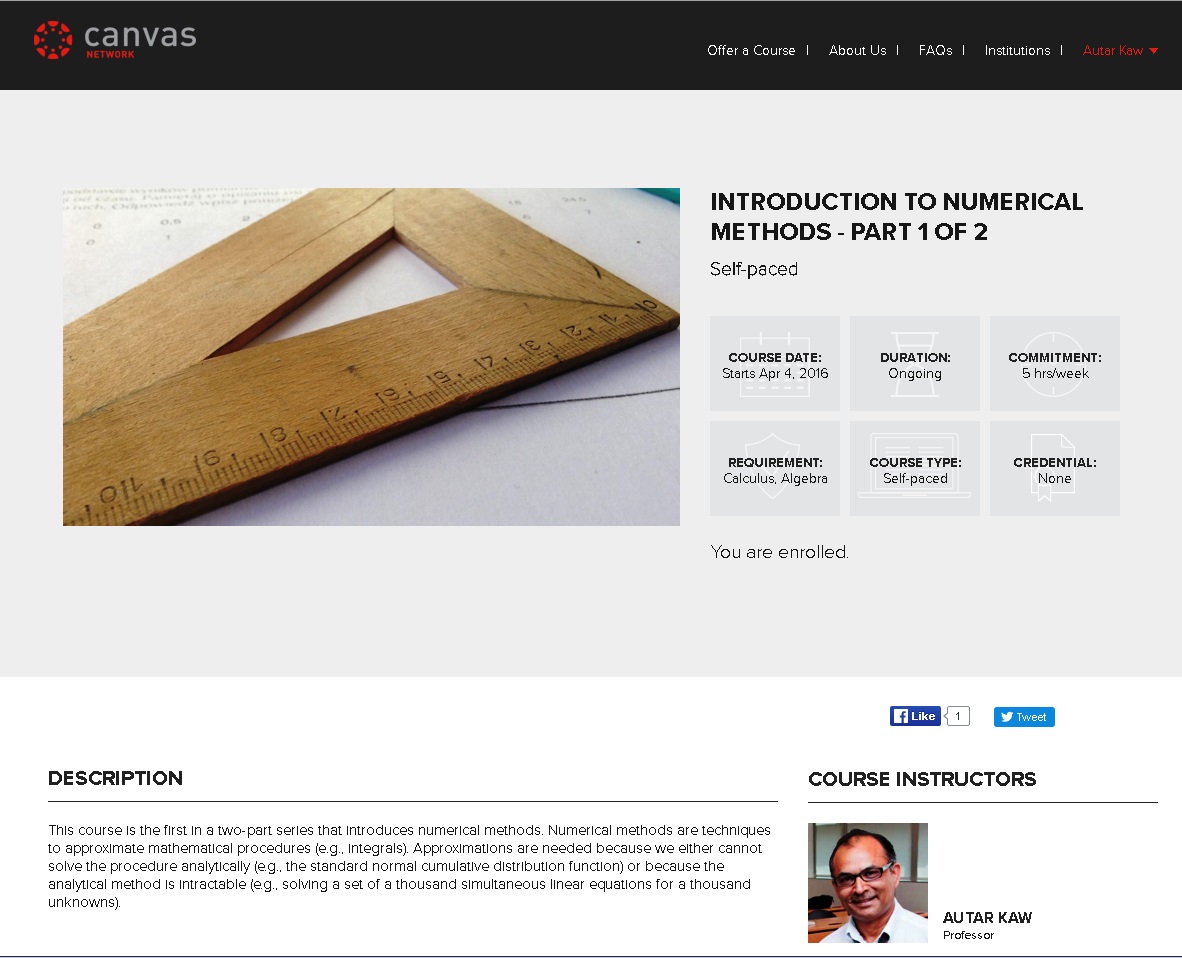After the rigorous and comprehensive development and assessment of the NSF funded innovative open courseware on Numerical Methods since 2002, we are offering a FREE Massive Open Online Course (MOOC) in Numerical Methods – Part 1 of 2 at https://canvas.instructure.com/enroll/KYGTJR
The MOOC is Part 1 of a two-part course in Numerical Methods. The course covers the mathematical procedures of differentiation, nonlinear equations and simultaneous linear equations. We had the MOOC on Udemy but we are migrating it to CANVAS in two stages. CANVAS has a broader appeal for free MOOCs, it has a user friendly interface, looks familiar for many students using CANVAS, and has the capability of online quizzes that are algorithmic.
Start your journey today whether you are learning numerical methods for the first time or just need a refresher. Unlike other MOOCs, you have a lifetime access to the course and you can pace yourself. Ask questions within the course and we will keep the conversation going!

About: Numerical methods are techniques to approximate mathematical procedures (an example of a mathematical procedure is an integral). Approximations are needed because we either cannot solve the procedure analytically (an example is the standard normal cumulative distribution function) or because the analytical method is intractable (an example is solving a set of a thousand simultaneous linear equations for a thousand unknowns).
Materials Included: Textbook Chapters, Video Lectures, Quizzes, Solutions to Quizzes
How Long to Complete: About 20 hours of lectures need to be watched and estimated time to read the textbook and do quizzes is 40 hours. It is a typical 7-week semester length course.
Course Structure: For each section, you have video lectures, which are followed by a textbook chapter, a quiz and its complete solution, and automatically graded online quizzes.
___________________________________________
This post is brought to you by
- Holistic Numerical Methods Open Course Ware:
- Numerical Methods for the STEM undergraduate at http://nm.MathForCollege.com;
- Introduction to Matrix Algebra for the STEM undergraduate athttp://ma.MathForCollege.com
- the textbooks on
- the Massive Open Online Course (MOOCs) available at

